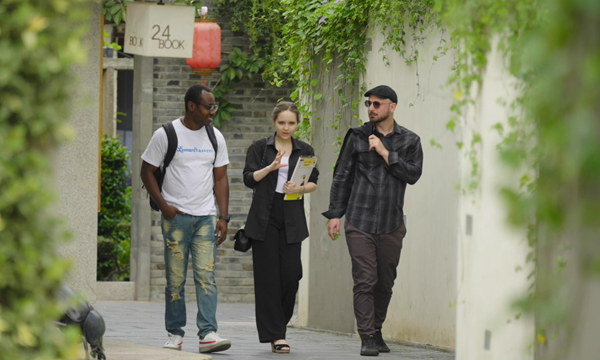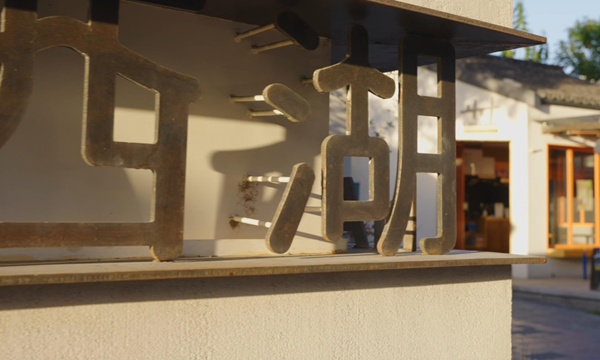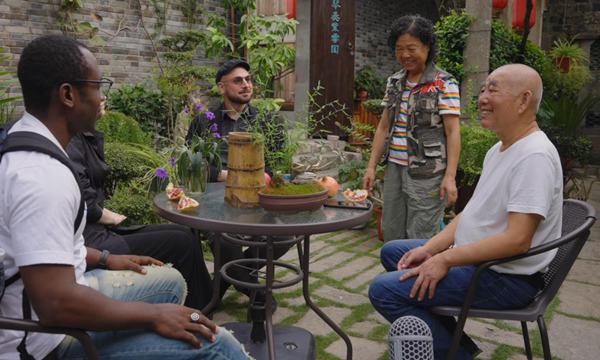Micro-renewal brings historical block back to vitality

In September 2022, American architect Adam Brillhart and three international students from the School of Architecture of Southeast University strolled through Xiaoxihu neighborhood in Nanjing. From the city’s urban renewal, they tried to gain insight into tremendous efforts in improving people's lives and wellbeing over the years in Jiangsu Province.
The neighborhood is one of the 22 areas recognized in the Nanjing Historical and Cultural City Conservation Plan and also one of the residential compounds in Nanjing with well-preserved characteristics of both the Ming and Qing dynasties. However, located close to the bustling Laomendong historical block, the area with dense population and buildings in poor conditions, looked more like a shantytown.

In 2015, the then Nanjing Municipal Planning Bureau worked with the Qinhuai District Government to launch an initiative by graduate student volunteers from three universities in the city. It explored ways for the conservation and regeneration of the neighborhood. After experts’ evaluation, it was decided that Professor Han Dongqing's team from the School of Architecture of Southeast University undertook the planning and design while the Nanjing Historical City Protection and Construction Group was responsible for the project implementation. Instead of large-scale demolishing and rebuilding the area wholly, the project adopted an approach featuring self-renewal, systematic and sustainable efforts.

The project has created the first shared backyard space in Nanjing, also a tourist attraction today. The space in Liu Guangji’s house is in the center of the area but separated by high walls in the past. The design team talked with Liu Guangji and suggested to renovate the enclosed space into a beautiful garden that can be seen by passersby. Liu and his wife both agreed with the idea and also suggested to let tourists walk inside the garden for a better view.
The renewal project has respected the authentic local vibe and traditional culture. The small-scale and progressive measures helped preserve the area’s distinctiveness and socio-cultural traits. The renovation has provided space for various businesses, such as a workshop by Gu Yeliang, a master of Qinhuai lantern, bookstores, boutique hostels, which are all in harmony with the area’s original charm.

Xu Qing was the first resident who proposed to join the urban renewal project voluntarily. The Xu family has lived here for seven generations. The house was in a state of disrepair before the renovation and living here was actually very hard. But the family didn’t want to relocate as Xu said "our roots are here, and so are our family memories and emotional connections."
Xu's old house was classified as at Level-D risk. According to the policy, the government covered 60% of the renovation cost and the family paid 40% on its own.
"Let the original residents stay, respect them and continue their ways. This urban regeneration is truly people-orientated and thoughtful,” Adam wrote in his notebook.
Kong Xianghui, a resident of Xiaoxihu, goes to the nearby Xiangluanfang stage on every Sunday to join other amateur traditional Chinese opera performers. At 71, he is happy to organize more than ten performers for singing and performing. The renovation of Xiaoxihu, an area of 46,000 square meters, is regarded as a best practice of revitalizing the old urban area. In November 2021, Nanjing became one of the first 21 cities to pilot urban renewal approved by the Ministry of Housing and Urban-Rural Development. Then in September this year, the Phase II of Xiaoxihu neighborhood renovation was included in the first batch of pilot urban renewal projects in Jiangsu, which will help more people enjoy livable environment and also protect the cultural heritage.
Contact us at english@jschina.com.cn